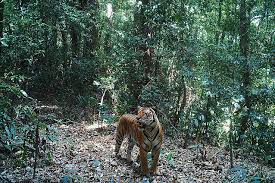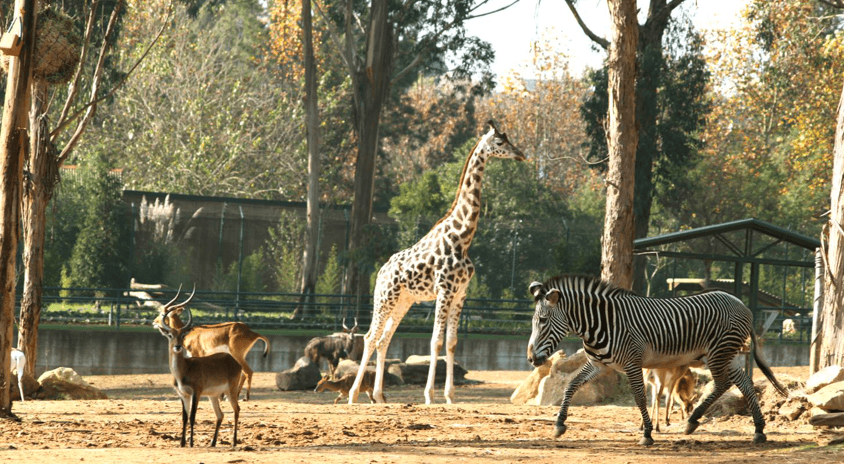
Table of Contents
What is insitu Conservation?
Insitu and exsitu conservation are two critical strategies used for the preservation of biodiversity. Both methods aim to prevent the extinction of species and maintain their genetic diversity. In this article, we will discuss in detail about in-situ and ex-situ conservation, their differences, and the importance of each strategy.
Insitu conservation refers to the conservation of species in their natural habitats. It involves the protection and management of ecosystems, which includes the conservation of plant and animal species. Insitu conservation is an essential approach to biodiversity conservation as it allows species to evolve and adapt to changes in their natural environment.
Insitu conservation strategies can be implemented in a variety of ways, including protected areas, such as national parks, wildlife sanctuaries, and biosphere reserves. These areas are designated for the preservation of ecosystems and their associated flora and fauna. In-situ conservation also involves sustainable management practices, such as community-based conservation, habitat restoration, and the regulation of human activities that may harm the ecosystem.
Benefits of In-situ Conservation
In-situ conservation has several advantages, including the following:
- Preservation of natural habitats – In-situ conservation preserves the natural habitats of species, allowing them to live and evolve in their natural environment.
- Maintain genetic diversity – In-situ conservation maintains the genetic diversity of species, which is crucial for their long-term survival.
- Protection of ecosystems – In-situ conservation protects entire ecosystems, including other flora and fauna that depend on the species being conserved.
- Cost-effective – In-situ conservation is generally more cost-effective than ex-situ conservation, as it involves managing species in their natural habitats.
What is exsitu Conservation?
Exsitu conservation, on the other hand, refers to the conservation of species outside their natural habitats. This method involves the removal of species from their natural environment and their conservation in a controlled environment, such as botanical gardens, zoos, and seed banks. Ex-situ conservation is usually done as a last resort when in-situ conservation measures have failed, or when species are in immediate danger of extinction.

Ex-situ conservation strategies can be implemented in several ways, including the following:
- Botanical gardens – Botanical gardens are established for the collection and display of plants. They also serve as repositories of genetic diversity and are used for research and education.
- Zoos – Zoos are established for the conservation and display of animals. They also serve as repositories of genetic diversity and are used for research and education.
- Seed banks – Seed banks are established to conserve plant species in the form of seeds. They are used for research and education and serve as repositories of genetic diversity.
Benefits of Ex-situ Conservation
Ex-situ conservation has several advantages, including the following:
- Preservation of genetic diversity – Ex-situ conservation helps to preserve genetic diversity by providing a backup of genetic material outside the species’ natural habitat.
- Protection from threats – Ex-situ conservation protects species from threats such as habitat loss, overexploitation, and climate change.
- Research and education – Ex-situ conservation provides opportunities for research and education, helping us to learn more about the species being conserved.
- Emergency conservation – Ex-situ conservation can be used as an emergency conservation measure for species that are critically endangered or facing extinction.
Difference between Insitu and Exsitu Conservation
| In-situ Conservation | Ex-situ Conservation |
|---|---|
| Conserves species in their natural habitats | Conserves species outside their natural habitats |
| Protects ecosystems and maintains genetic diversity | Provides a backup of genetic material |
| Generally more cost-effective | Generally more expensive |
| More sustainable | Less sustainable |
| Allows species to evolve and adapt | Limits species’ ability to evolve and adapt |
| Less disruptive to natural ecosystems | Can be more disruptive to natural ecosystems |
| Requires protection of larger areas of land | Requires less land but more intensive management |
| Challenges include habitat destruction, climate change, and natural disasters | Challenges include maintaining genetic diversity and avoiding inbreeding |
Importance of In-situ and Ex-situ Conservation
The importance of in-situ and ex-situ conservation cannot be overstated. Both methods are essential for the preservation of biodiversity and the prevention of species extinction.
In-situ conservation is critical for maintaining the ecological balance of natural habitats. It is essential for the preservation of ecosystems and the maintenance of genetic diversity. In-situ conservation also helps to protect other flora and fauna that depend on the species being conserved, which is vital for the overall health of the ecosystem.
Ex-situ conservation is also essential, particularly for species that are critically endangered or facing extinction. It provides a backup of genetic material outside the species’ natural habitat, protecting it from threats such as habitat loss, overexploitation, and climate change. Ex-situ conservation also provides opportunities for research and education, helping us to learn more about the species being conserved.
Conclusion
In conclusion, insitu and exsitu conservation are two essential strategies for the preservation of biodiversity. In-situ conservation involves the conservation of species in their natural habitats, while ex-situ conservation involves the conservation of species outside their natural habitats. Both methods are crucial for maintaining the ecological balance and preserving genetic diversity. It is important to note that in-situ conservation is generally more sustainable and cost-effective than ex-situ conservation. Therefore, efforts should be made to prioritize in-situ conservation measures to ensure the long-term survival of species and ecosystems.
Important Links